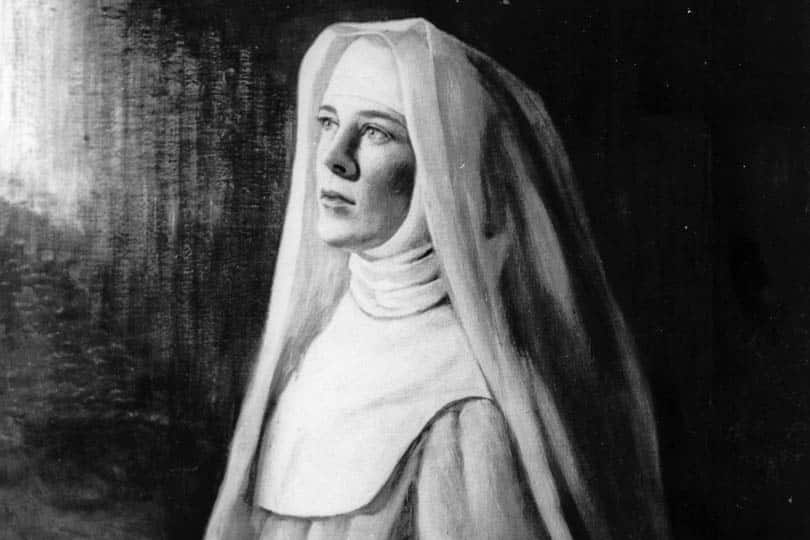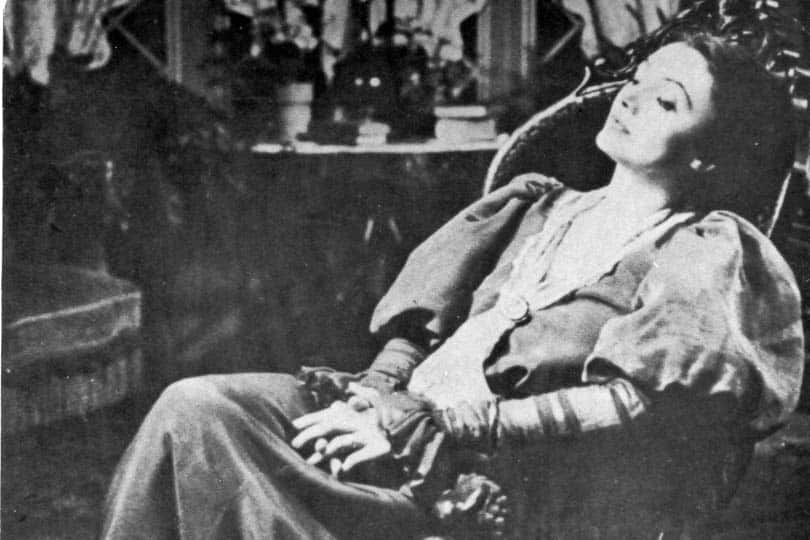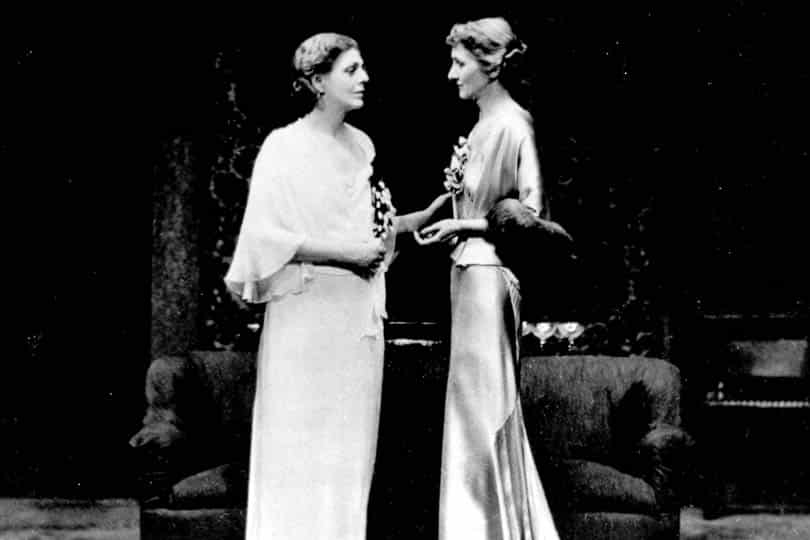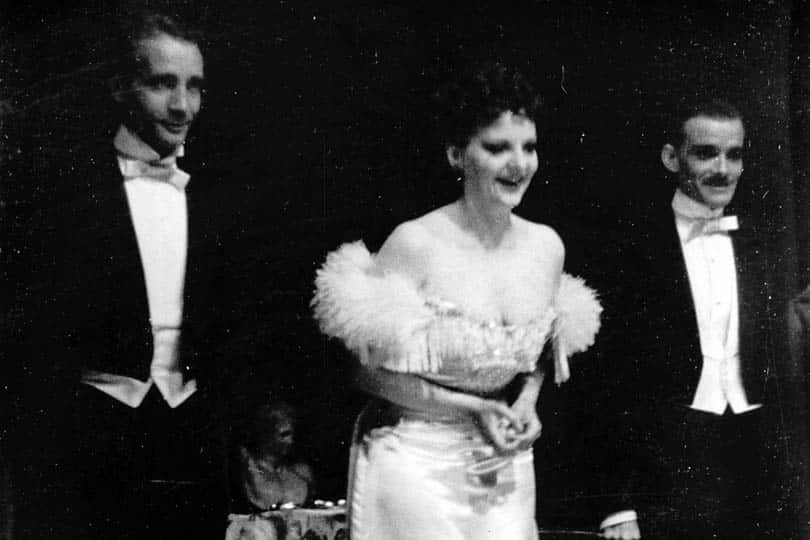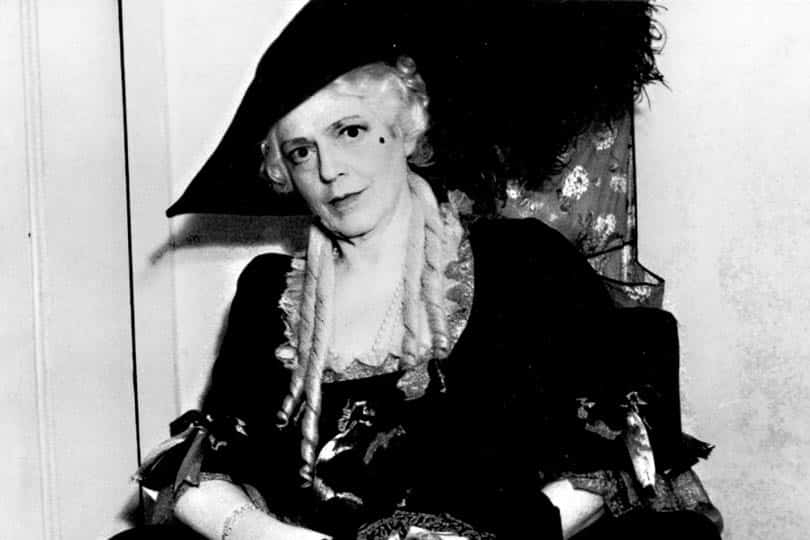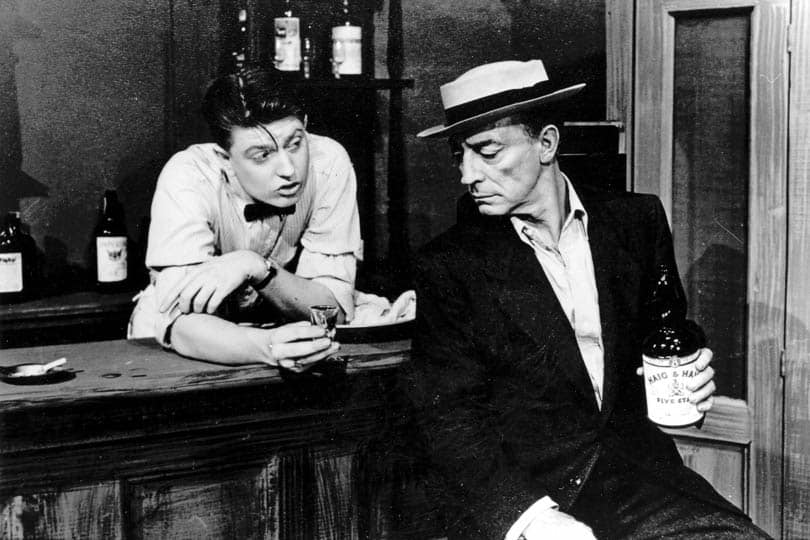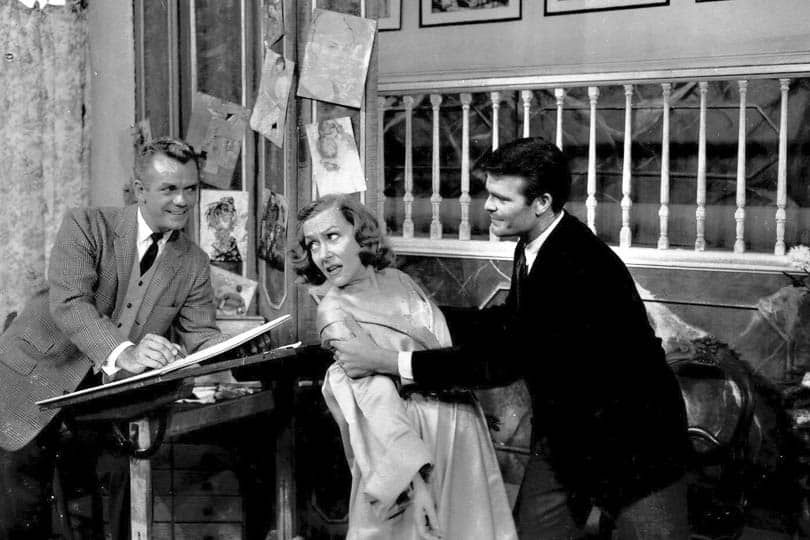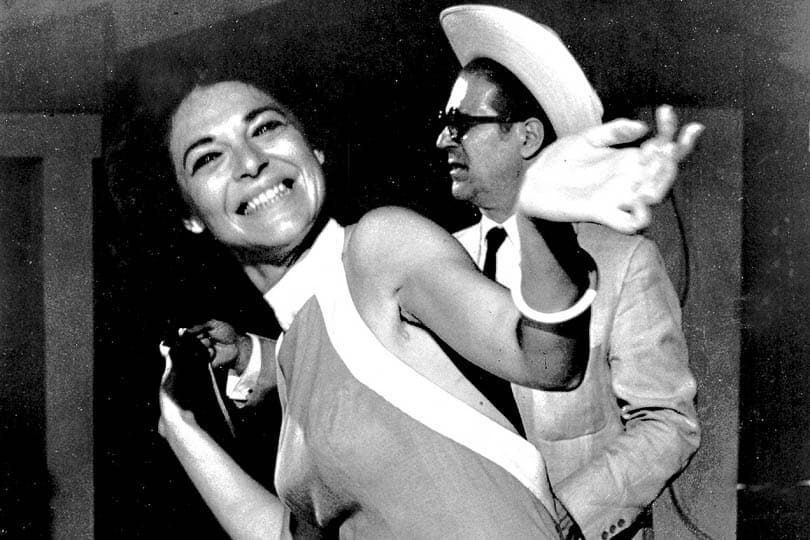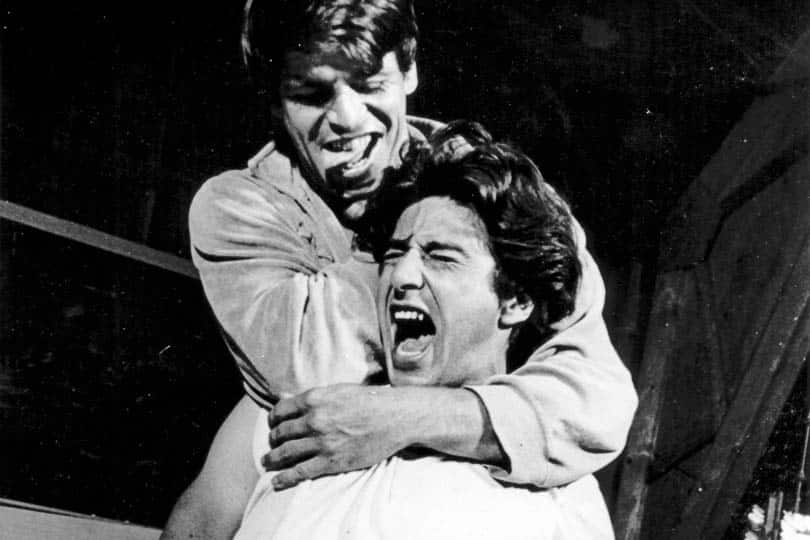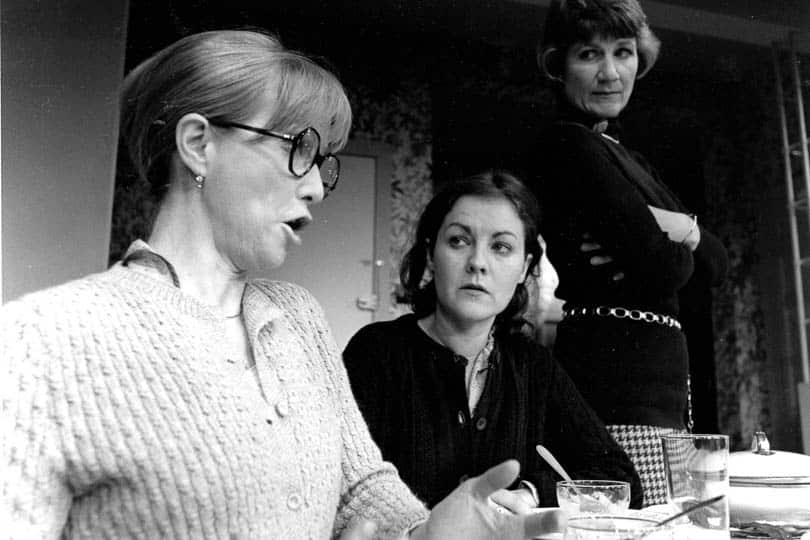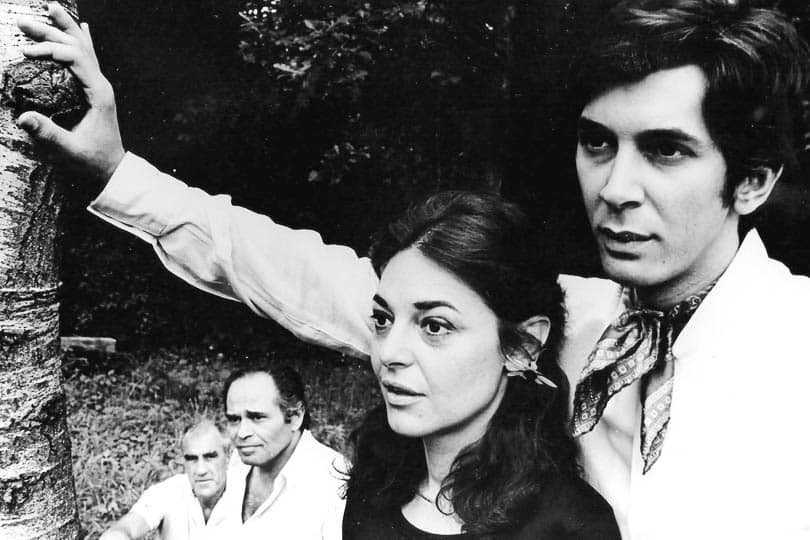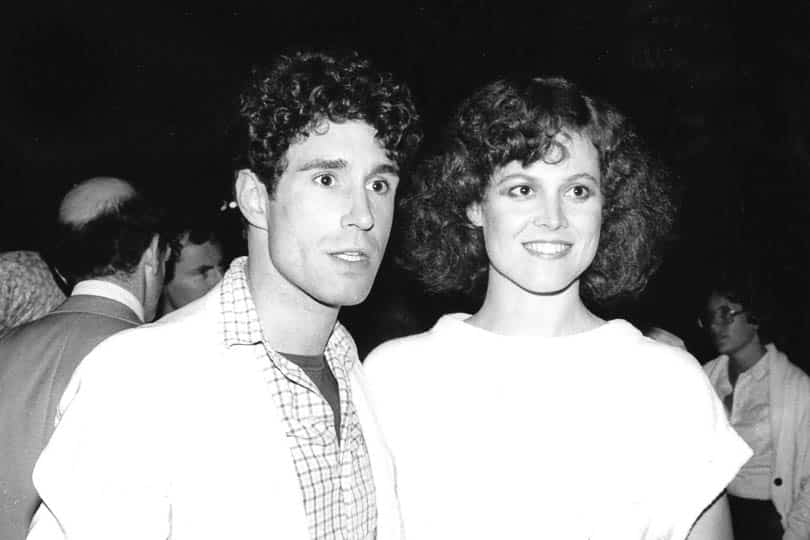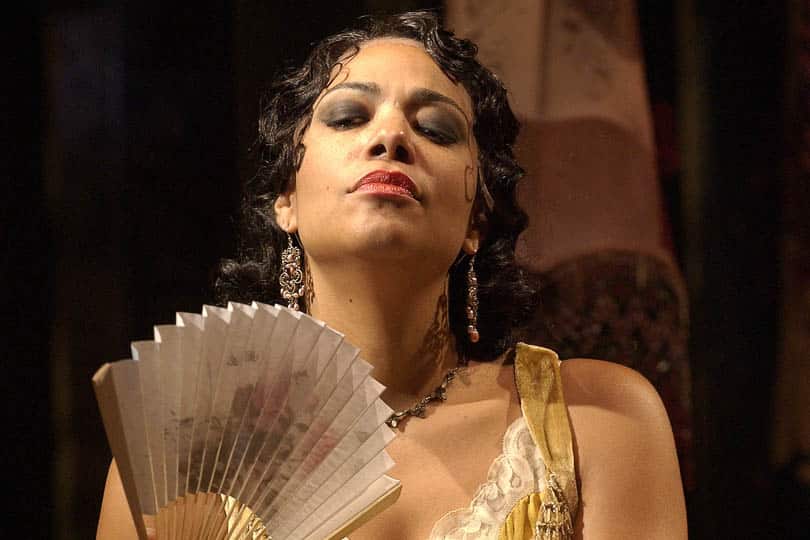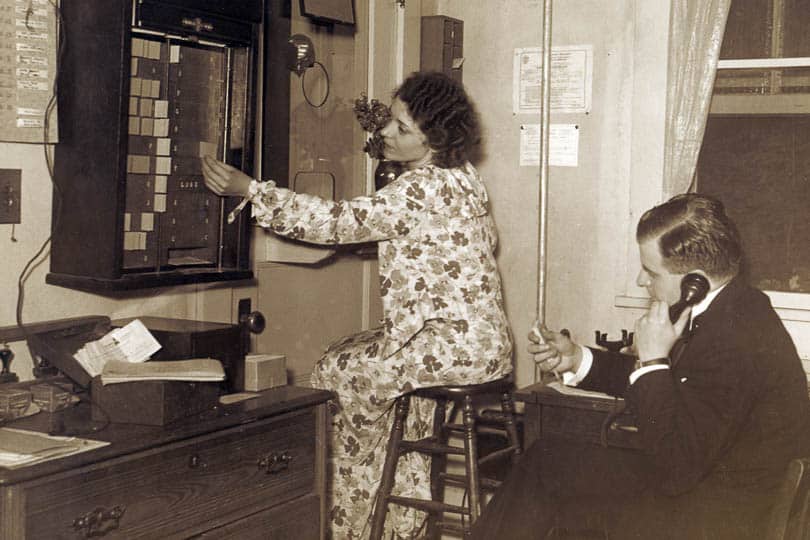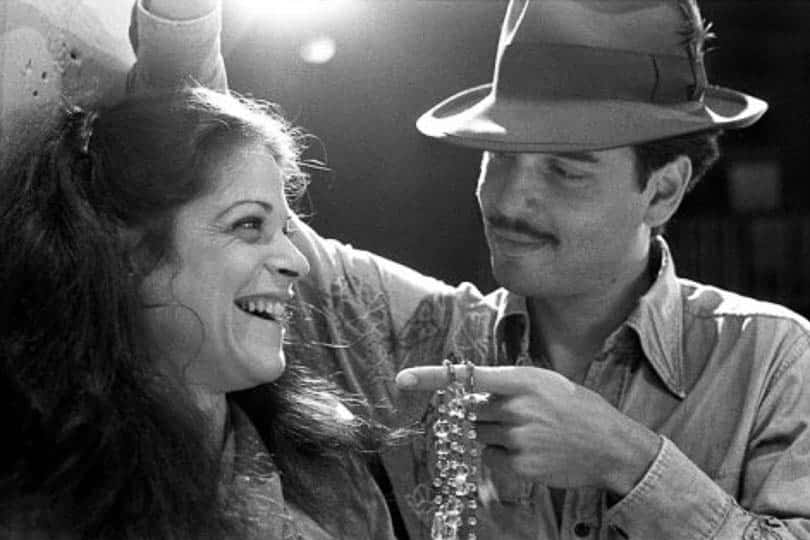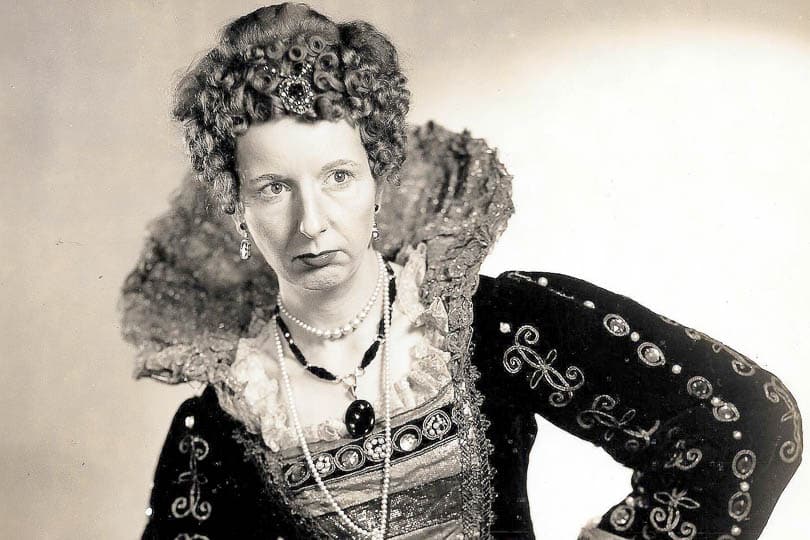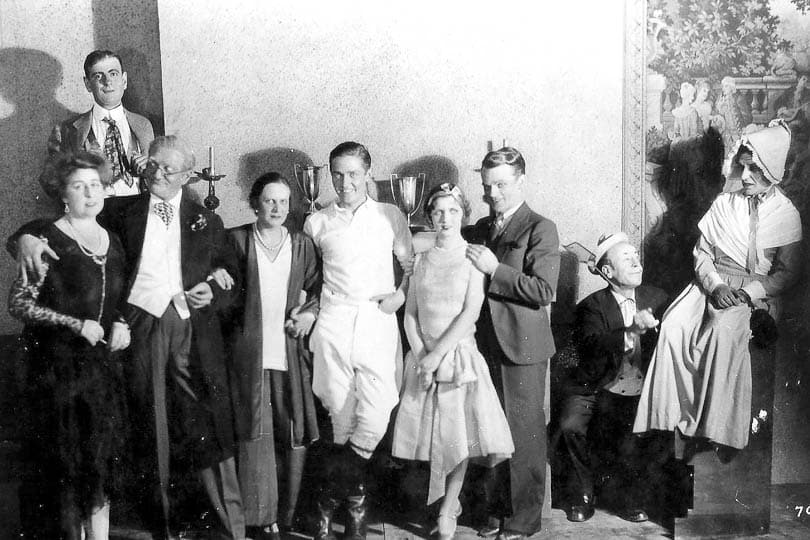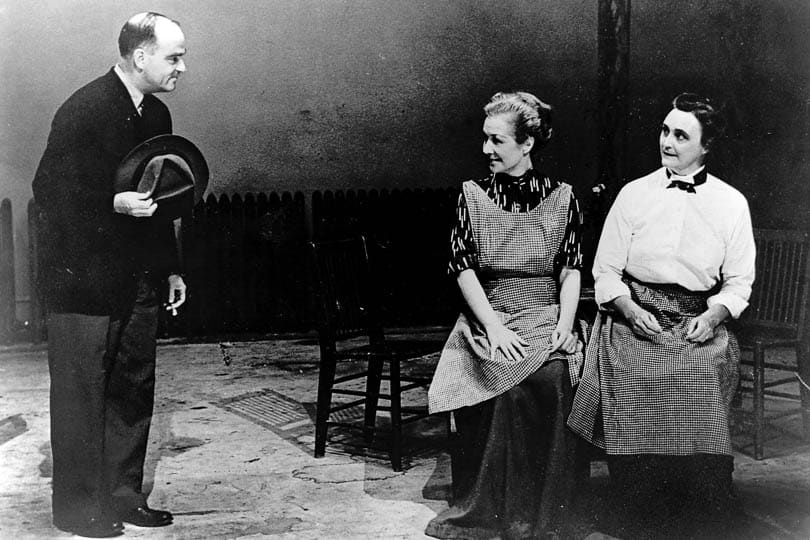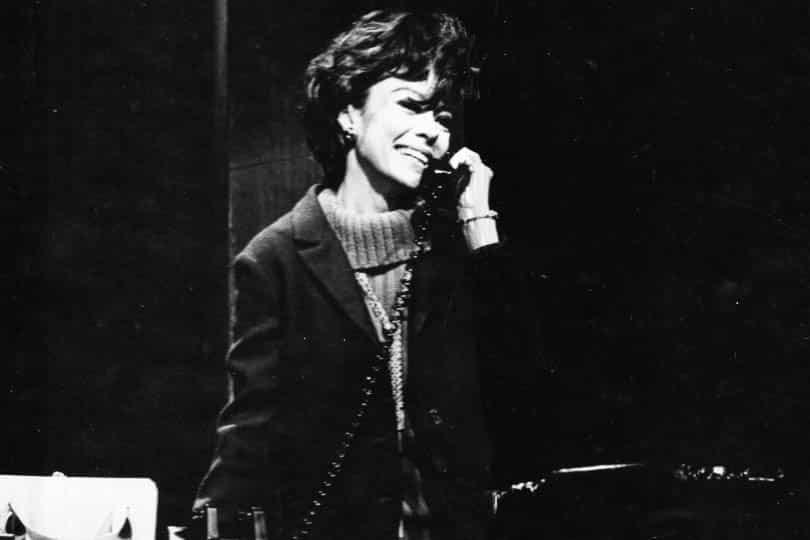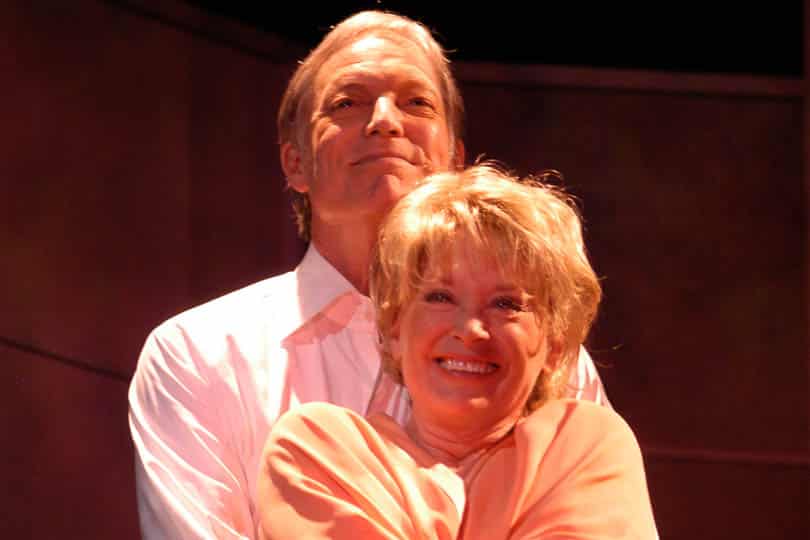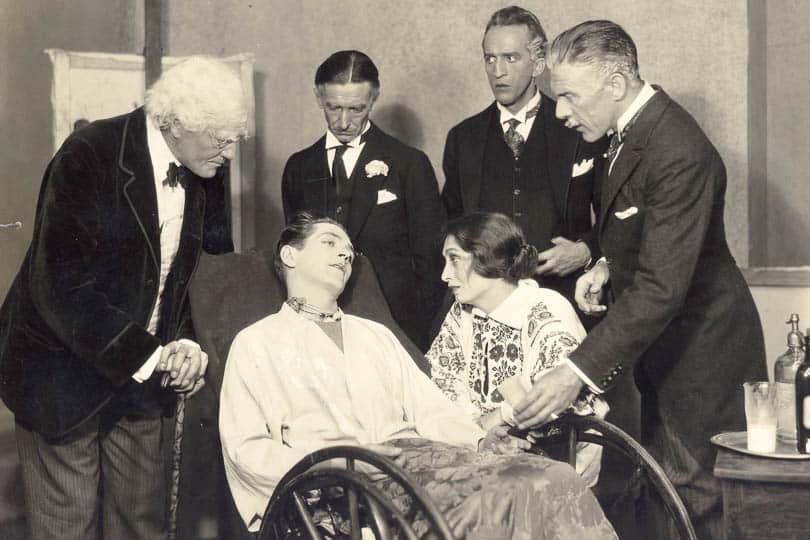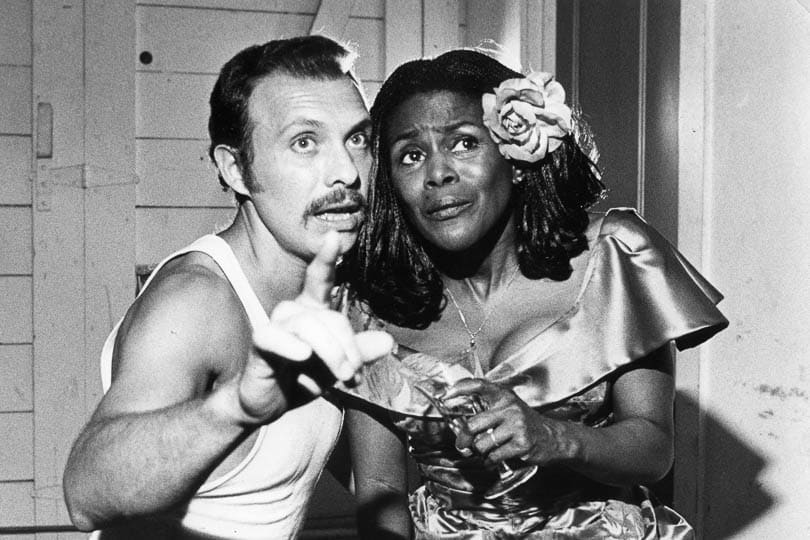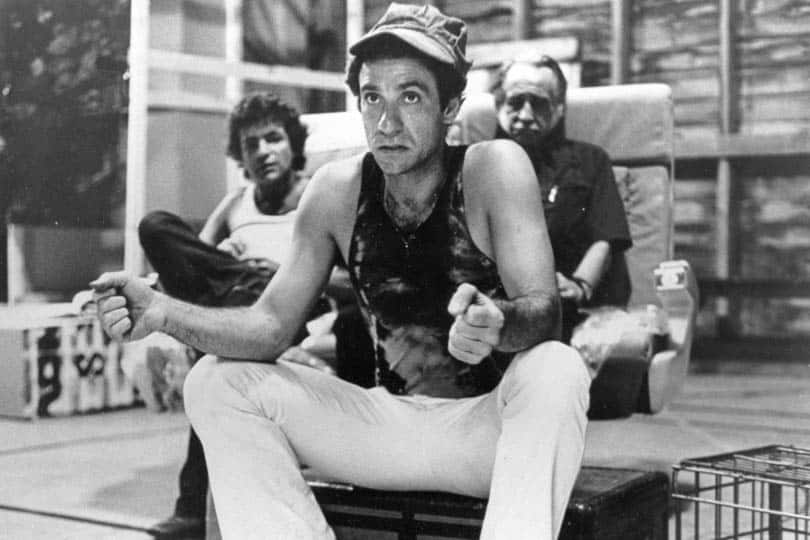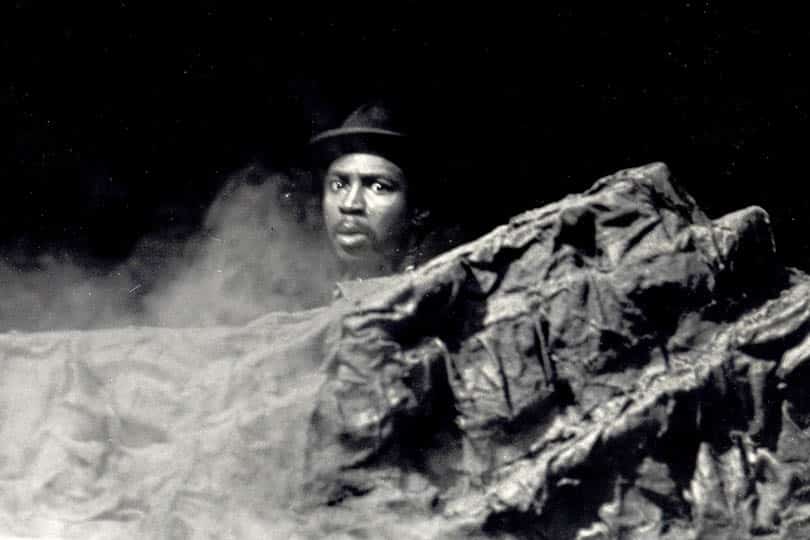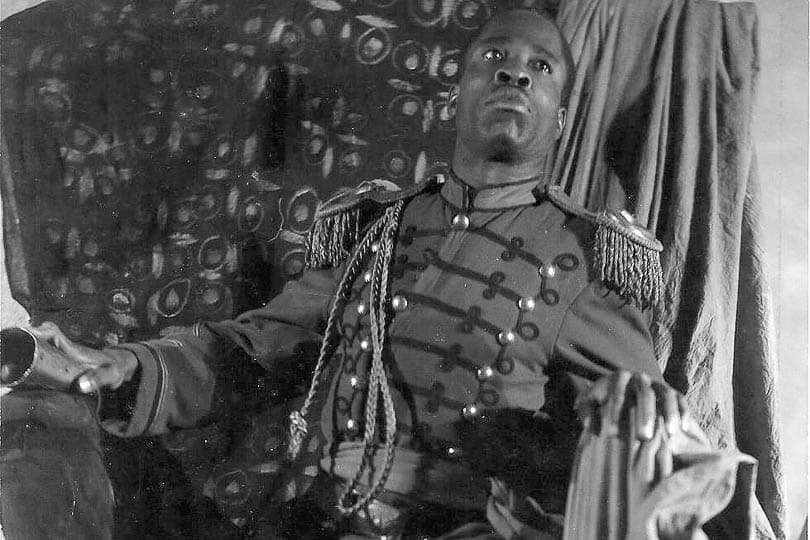In 1887, Stanford White designed and built the Stockbridge Casino. By 1927, the building fell into disrepair.
In 1928, The Berkshire Playhouse was founded when Mabel Choate sold the Stockbridge Casino to financier Walter Clark. Clark immediately contacted three friends—Daniel Chester French, Dr. Austen Riggs and the New York Tribune’s theater critic Walter Prichard Eaton—and together they formed the Three Arts Society. They moved the casino in pieces by horse drawn wagon to the far eastern end of Main Street to the bottom of Yale Hill, where it remains to this day. The Three Arts Society remodeled the casino’s interior by adding a stage and seating for 450 people, and christened the new theatre The Berkshire Playhouse. With the talented young actor Alexander Kirkland as its Executive Producer and F. Cowles Strickland as its Director, the Playhouse opened on June 4, 1928 with The Cradle Song, starring Eva Le Gallienne. Years later, her words of inspiration still provide guidance: “the theatre is a great force capable of spreading beauty and understanding.”
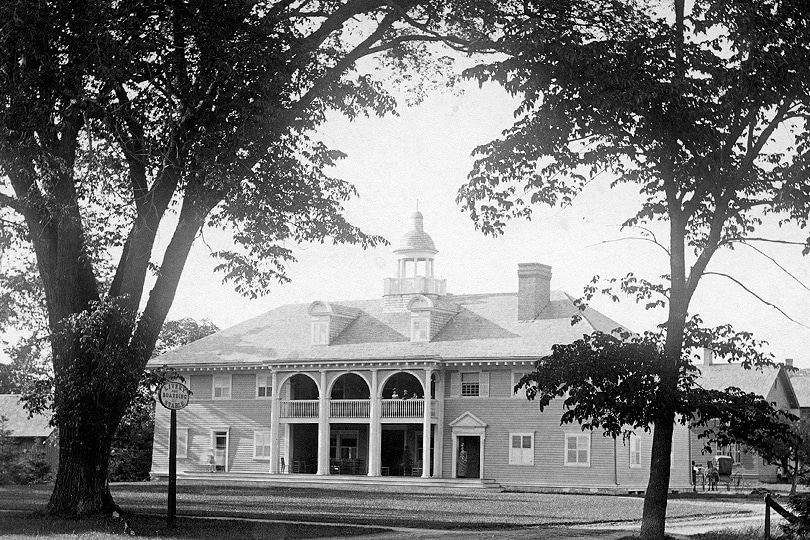
Stockbridge Casino pre 1928 in the center of Stockbridge before the current location.
In 1929, during its second season, The Berkshire Playhouse launched a theatrical school, welcoming Jane Wyatt as one of their first students. Katharine Hepburn had small roles in two plays and James Cagney was in Oh, Boy! by P.G. Wodehouse.
In 1934, the Berkshire Playhouse began its search for a new director. Walter Clark called his four most loyal board members—Mabel Choate, Daniel Chester French, Austen Riggs and Walter Prichard Eaton—to determine the Playhouse’s future.
In 1935, they decided to continue operations under the direction of 23-year-old Billy Miles, a bit actor during the Playhouse’s first season who later worked as a gofer for Strickland. The icing on the cake of that 1935 season was Zoe Akins’s Déclassée with Ethel Barrymore. Though she was 55 years old, 15 years older than she’d been when she’d played the glamorous role on Broadway in 1919, the Playhouse’s audiences were thrilled with Barrymore’s performance. In the years to come, Miles continued to pursue female stars. It was, as Brook Atkinson called it, “the Era of the Matriarch,” and featured the likes of Tallulah Bankhead, Ruth Gordon, Lillian Gish, Eva Le Gallienne, Peggy Wood, Ruth Chatterton, Shirley Booth, Kay Francis, Sylvia Sidney and Gloria Swanson. Billy Miles remained the Berkshire Playhouse’s director for 18 years.
In 1942, the Berkshire Playhouse was forced to close during the war. However, Miles kept the drama school open and in his letter announcing the closure, stating, “the reason that the Playhouse cannot operate this year is the gas rationing…Our plan is to form with our student group a circuit theatre, to present a different full-length play each week of the season, playing a different town on each of four nights.” He wanted to ensure both that the students and patrons would be able to participate in theatre despite the harrowing times.
In 1964, The Berkshire Playhouse was reorganized as a non-profit organization and renamed Berkshire Theatre Festival. The board hired a new president—Stockbridge resident and playwright William Gibson—who had two Broadway hits to his credit: Two for the Seesaw and The Miracle Worker. Both had been directed by another Berkshire resident, Arthur Penn, and had starred one of the country’s most outstanding actresses, Anne Bancroft. The Berkshire Playhouse was about to become a theatrical force amongst regional theatre across America. Not only did it have a new name, a new way of doing business, and a new president, but, with William Gibson and his new artistic director George Tabori guiding it, the theatre had a new direction, a revitalized sense of creative vision and a bold excitement. Gibson had opened the door to theatrical experimentation, and BTF gallantly soared ahead, embracing what was to become the most fertile and dynamic period it had ever known.
The 1966 season opened with Thornton Wilder’s The Skin of Our Teeth, directed by Arthur Penn, and featuring Anne Bancroft, Alvin Epstein, Estelle Parsons, and the youngest and least well known member of the company, Frank Langella. The only new play of the 1966 season was Murray Schisgal’s Fragments, with two old friends and former roommates who had both just completed making films that were to change their lives: Dustin Hoffman and Gene Hackman. A year later, Dustin would receive an Oscar nomination for The Graduate and Gene would receive one for Bonnie and Clyde.
The following year in 1967, Producer Peter Cookson joined Berkshire Theatre Festival, and the season was chosen by him, Arthur Penn and Gibson. Beatrice Straight appeared in A Streetcar Named Desire and Al Pacino played a juvenile delinquent and drug addict in Does A Tiger Wear a Necktie, a new play by Berkshire playwright Don Petersen, which went on to Broadway where the young, virtually unknown Pacino won a Tony for his performance.
In 1976, Berkshire Theatre Festival’s Playhouse was added to the National Register of Historic Places.
In 1979, The Berkshire Theatre Festival Board launched a nationwide search for a new artistic director, finally settling on a 29-year-old college drama teacher from Vermont, Josephine Abady. Abady remained at Berkshire Theatre Festival for nine years, and during that time produced only American plays, many of them revivals written prior to World War II, particularly the ’20s and ’30s. These productions included The Butter and Egg Man, The Petrified Forest and The Little Foxes. She also produced works by Stephen Sondheim, Arthur Miller, Clifford Odets, Christopher Durang, Edward Albee and Robert Anderson. Abady was instrumental in organizing the Berkshire Theatre Festival Archives, and worked with the Stockbridge Library to ensure that the history of BTF would be preserved. Abady was also responsible for expanding on the Theatre for Youth offerings of BTF. Developing out of a desire to fully engage all members of the community, and make a positive impact on local youth, the Young Americans Playwright Program (YAPP) was established in 1984.
By the 1980s, BTF’s newer theatre, The Unicorn Theatre, became a home for new and experimental work and in 1992, the Unicorn was home to cabaret acts from New York City and workshop style productions.
In 1996, The Unicorn Theatre was reopened after a lengthy renovation and became BTF’s official second stage. Since the beginning, Berkshire Theatre Festival had a focus on training. Early acting apprentices renovated a space in the old Mellen Barn to rehearse and perform scenes and monologues.
1998 was the year that Kate Maguire began her tenure as Artistic Director after working with Arthur Storch at BTF since 1995. During her first year as Artistic Director, she helped to overhaul and expand the education program with Allison Rachele Bayles.
At Berkshire Theatre Festival, 2006 was the first year that A Christmas Carol was produced, and was the start of the annual Holiday Show tradition.
In 2010, Berkshire Theatre Festival and The Colonial Theatre merged to create Berkshire Theatre Group. As Kate Maguire, Artistic Director, CEO, said “Berkshire Theatre Festival and the Colonial share the distinction of having provided an artistic home for the Lunts and the Barrymores; each are registered as National Historic Landmarks. The combined stories of these theatres provide a mirror of insight to the American Theatre—indeed they represent the strength of the American story and capture the essence of our understanding that the arts provide doorways to growth and windows to all that lies in the human heart.” This merger also allowed Berkshire Theatre Group to expand upon the Year-Round Education Program developed at BTF in 1998, as education and community engagement is at the heart of Berkshire Theatre Group’s mission.
